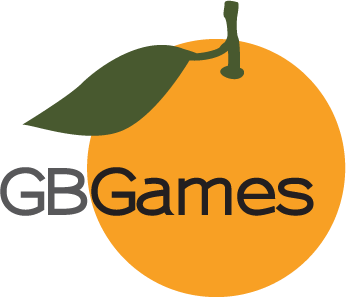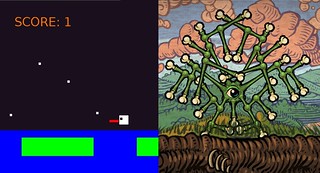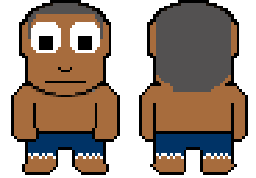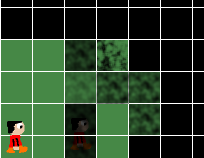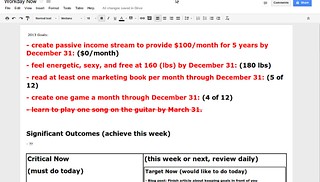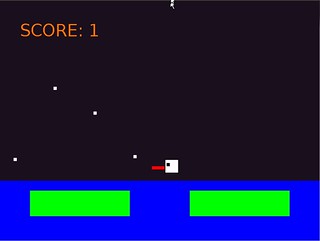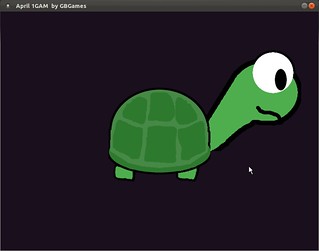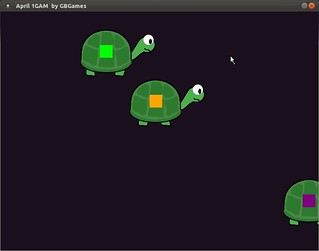Often people become indie game developers the same way anyone first becomes an entrepreneur.
They fall into it and don’t realize just how big of a job they really have.
It’s one thing to be a hobbyist. You are doing game development for the love of doing it. You make games you want to play, and if anyone else likes it, it’s gratifying, but it’s gravy on top of just spending time on something enjoyable. And if you make a few bucks, so much the better. Now your hobby is helping you pay for pizza and beer.
But if you want to do it for a living, it’s harder.
You may not realize it at first. You might think, “Duh, I know that running a business is different from enjoying a hobby. I’m aware of the difference.”
But you don’t. Unless you’ve got the experience, you can’t prepare for how much pain and effort there is, how much anguish and despair you might feel, and how stressed out you can be due to spending time handling all manner of business-y things and not getting to the “real work” of game development, the whole reason you decided to pursue it full-time.
You don’t know the struggle to believe in your own self-worth when another month goes by in which you haven’t made enough income and you have a family to support, worrying that they are secretly wondering when you’re going to give up “playing with the computer,” go find a “real job,” and place your priorities in the “right” place.
You don’t know what it is like to work, work, work, only to feel like you haven’t made enough progress to justify all of the sleepless nights and bloodshot eyes and missing out on social experiences, and all you know how to do is more work.
Every once in awhile, you’ll pull yourself away from your wheel-spinning and isolation and look out into the world. There, you’ll see huge successes like Minecraft. You’ll read about Steambirds, Triple Town, and plenty of IGF-winning games getting good press. You’ll find threads about how indies need to pursue mobile or F2P or how the only way to make money on PC is through Steam (despite successes like Minecraft).
And then you look at your own efforts, and you start to compare and contrast.
Above: my May One Game a Month project, Hungry Frogs looks quite terrible, especially in comparison to something like Incredipede.
Am I Doing the Indie Thing Wrong?
Being an indie game developer means choosing your own path and following your own dream. In chasing it, though, sometimes it is hard to look at everyone else and not wonder if you’re missing out on some opportunities.
The mobile games space has grown to the point that we’re simply calling them games now. Free-to-play is essentially shareware taken to an extreme, but if you are trying to make a game that requires a purchase to play, good luck. Customers have the option of playing multiple new, effectively-free games per day. Everyone is having a hard time getting their games noticed, and your entire sales model might be a relic that is making it harder for yourself.
Ouya and Occulus Rift are the new hotness. It’s exciting to have another console that isn’t controlled by a company such as Microsoft or Nintendo, and finally having virtual reality headsets at a low-cost? What took so long?
Making games for tablets, creating your own alternative reality gaming, utilizing ads and in-app purchases, accepting donations, successfully driving a Kickstarter campaign, having a larger supportive network of indie friends…all of these things seem to be what all of the other indies are doing.
Why aren’t you?
Following The Money
The April issue of Game Developer magazine (R.I.P.) featured the annual salary survey. It still blows my mind how much average programmers and artists made, considering I’ve always heard how you can make more money programming bank software than working in the game industry. But of course, these numbers come from the major studios for the most part.
This salary survey also featured their fourth annual “Indie Report”, which surveyed independent developers and teams.
And found that they make almost nothing from their efforts.
Their average income was less than $25,000. Only 5% of them made over $200,000 from their games, while 78% made less than $30,000. Half made only $500 or less.
And these numbers are lower from the previous year, meaning that indies today are making less of a living than they were in the past, although to be fair there seems to be a lot of fluctuation from year to year.
But seriously, most indies surveyed (they collected data from 422 indies around the world) said they made less, sometimes much less, than what someone working a minimum wage job could earn in the United States.
Regarding the App Stores that everyone either loves or hates, we’ve all heard about how hard it is to impact your sales success there. Either you get featured or you don’t. It turns out that getting featured isn’t everything either, according to Jeff Tunnell’s post We Can’t Make It Here Anymore. At one point he talks about Color Sheep‘s success:
In spite of winning the two “app store lotteries” and getting featured by both Apple and Google along with stories in the New York Times and on huge traffic YouTube channels, their game has only sold around 50,000 copies, which has grossed $35,000 (after app store cuts). Considering that they spent $10,000 to launch and market their games at PAX, they have netted $25,000 before paying their wages.
At the other end, we have occasional successes. Awesome Guy Andy Moore recently posted Monster Loves You! By The Numbers, sharing the expectation-shattering sales numbers of the game he worked on in collaboration with Dejobaan Games and Other Awesome Guy Ichiro Lambe. Here’s a game that wasn’t really like anything else, that they nurtured from concept to delivery, and it worked out fantastically for the developers.
But even these successes make you wonder if your own efforts to make Yet-Another-Match-3-or-Minecraft-Clone is a waste of time.
Wait, You’re Not the Money?
Until I read the Game Developer salary survey, I was worried that I was missing out. Obviously most game developers wouldn’t be making enough money to do more than pay for an occasional meal, but a good number are probably doing well, right? I felt as if every time I looked up, I saw another example of an indie darling’s blood, sweat, and tears that finally got recognized and had paid off handsomely, or at least enough to pay to move out of his/her parents’ house. Every time I saw a demo of a game that people were praising, I thought I was looking at a game that was killing in the marketplace.
But the truth is, you can’t tell how well a game will sell from the look of a game, the charisma of a developer, or the amount of press dedicated to either one.
You can’t tell what the developer’s quality of life is like, and whether or not he/she is someone you really want to emulate.
And you can’t tell what a developer’s goals are. $20,000 would be plenty for someone with a lifestyle like Jason Rohrer, but is it a match for your desired lifestyle?
Everyone is making it up as they go along, so it isn’t as if some people have figured out how to live your life better than you are.
So why should you stress yourself out about not being like those other game developers?
Comparisons Add Stress
While running an indie game development business means understanding the trends and market demands, it doesn’t mean hopping on the bandwagon. Just because everyone else is doing it, it doesn’t mean you have to follow along.
When I, as an indie of many hats, put on the business owner hat, I realize that there are better things I can do than worry about how other indies are doing their starving-artist performance art. If most indies are putting their games out in Steam Greenlight, or pursuing F2P on iOS, or raising funds on Kickstarter…well, most of them aren’t making a sustainable living. No market, platform, or tool is going to magically make things all better in your struggle to earn enough to support yourself and your family while doing what you love.
And looking at the ones who actually are successful? Well, they already did it the way they did it. Following their lead might mean sharing in their success, but it often means getting scraps along with the other bajillion indies who are also going to jump into the now-open space.
Sure, you can say that some people get lucky. Notch has repeatedly claimed luck played a big part in the success of Minecraft, and I’m sure there was some luck involved in the success of Monster Loves You!, but I also think that putting love into what you do helps a lot.
Being an indie game developer is clearly not for people who should expect to make a truckload of money by churning out game-like software, so all you can do is put your heart and soul into what you’re making. Anything less is probably going to be rewarded appropriately.
On top of it, each indie has a different past. Notch has been making games for years, and some people have been doing so for decades. To compare your fledgling skills against someone who can put together a more highly-polished game in an hour than you can in a month is a good way to build an inferiority complex.
It’s fine to look at someone else’s skills and think, “I want to aspire to be that proficient and prolific.” It’s another to compare the results of your efforts to someone else’s. It will only stress you out and prevent you from being productive.
